
Welcome to Panna
Maria

Oldest Polish Settlement in the United States
"Jak Sie Masz"
by Teresa A. Brinkhous
American Polonia's Plymouth
Noted to be the oldest Polish settlement, school, and church in the United States, historic Panna Maria is located on a plateau near the junction of the San Antonio River and the Cibolo Creek where Farm Roads 81 and 2724 meet, four miles north of Karnes City and 55 miles southeast of San Antonio in central Karnes County. Originally established as a colony for Catholic Polish immigrants to reside and worship, Panna Maria is located in a fertile agricultural district devoted to diversified farming.

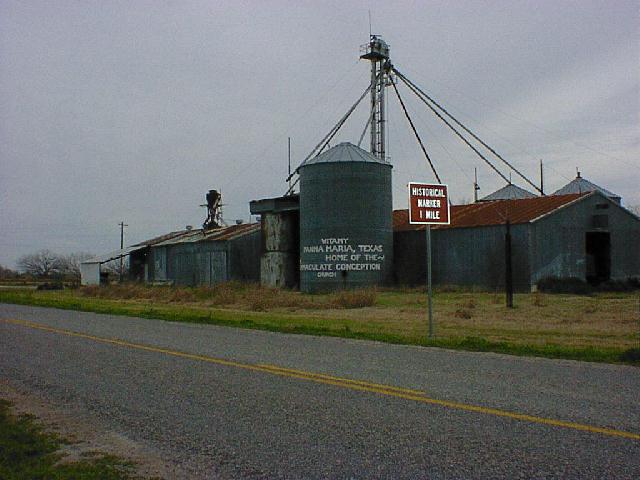
"FOUNDING FATHERS"

| 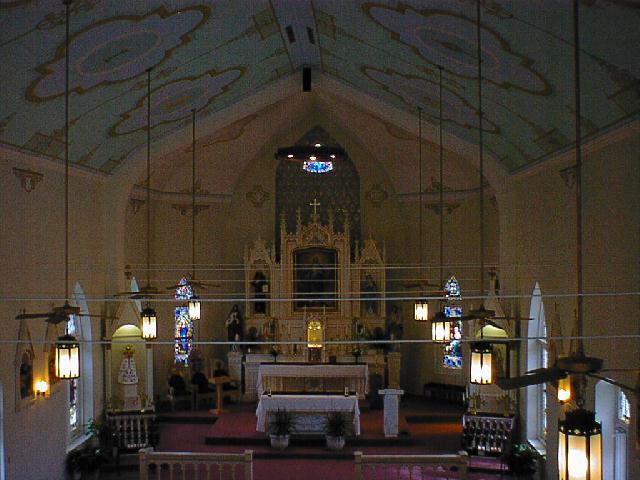
| 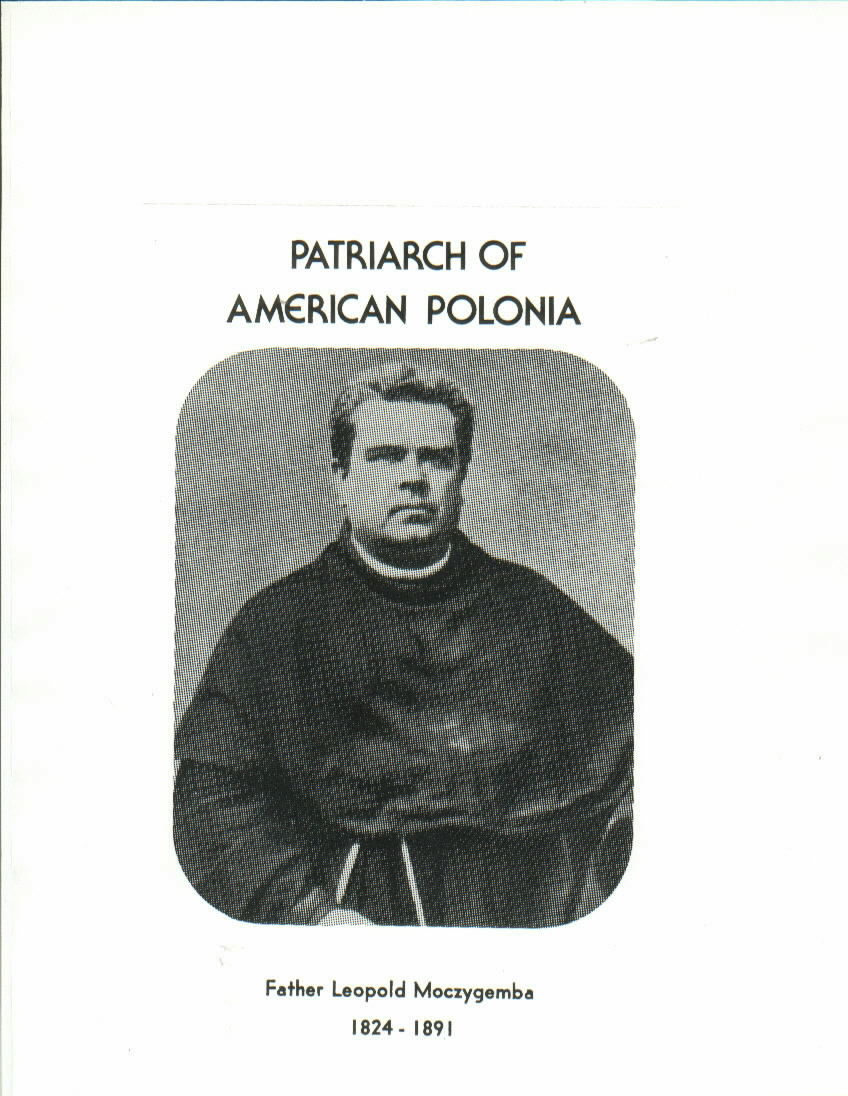
|
| Immaculate Conception Church | Remodeled Altar | Fr. Leopold Moczygemba |
|---|
In 1852 a young Franciscan missionary now known as the "Father of American Polonia", Father Leopold Moczygemba, arrived in Texas to minister to German parishes in New Braunfels and Castroville. Moczygemba loved the Texas countryside so much that he soon began writing and encouraging his fellow Poles to leave the harsh economic and social conditions prevalent under the Prussian domination of upper Silesia. Fr. Moczygemba had little difficulty convincing them since most did not want to be forced to perform military service for the Prussian Army, and soon after the influx of immigrants began to take shape. The first group of immigrants, who arrived December 3, 1854, included five of Moczygembas' siblings, four boys and one girl. The trek was difficult, traveling first by train to Bremen, by ship to Galveston, and by foot and rented Mexican oxcart to San Antonio, to the waiting Father, who then escorted them to the site he had chosen for their new home. Unlike the German immigrants who were provided for handsomely (paid transportation expenses, meals and accommodations) by Prince Carl of Solmes-Braunfels, the Poles were lucky if they actually made it through the trip to their new home once in Texas.
The land Moczygemba acquired for the colony originally belonged to an Irishman named John Twohig, who sold the land at an inflated price to the newcomers. Having used church funds to procure the 238 acres, Moczygemba set aside 25 acres for the church and parceled out the rest to those who could not afford the purchase of their own farms. Contemporary estimates of the number of these original settlers varies from 150 to 800. Numerous Poles died at sea, or during the land trek, or as they passed through Texas communities on their way to Panna Maria. Several other groups chose to settle in different communities in the area to include Bandera and New Braunfels. Besides the purchase of the 200 plus acres, Father Moczygemba did little to prepare for the settlers' arrival in the way of stocking provisions. Tradition tells us that the first mass was given under the oak tree on December 24th of 1854, but specifically pointed out to me in interviews was the story of Father Moczygemba's "pot of soup". Loretta Niestroy of the Panna Maria Historical Society explains, "During the mass on Christmas Eve, Father Moczygemba prepared a big pot of soup for the newcomers but somehow a poisonous snake fell into the pot and the soup had to be thrown away. This was NOT a good omen for the settlers." But even still, they persevered and began working to make their new home more comfortable.
ECONOMY
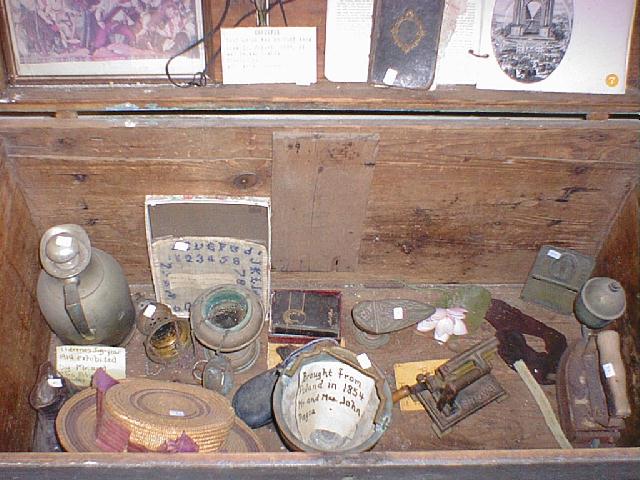
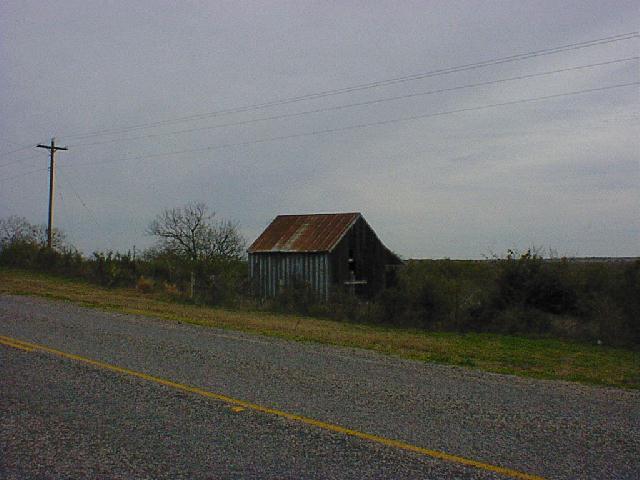
Initially the immigrant Poles began making their houses from mud and grass much like the sod houses most well associated with the establishment of the American frontier. Farming was a main source of food and income for most families in the area. Two more groups of Poles arrived from Silesia one in 1855 (700 Poles) and one in 1856 (30 families) and the colony began to thrive socially. On September 29 of 1856 the Panna Maria Church was built and consecrated. Life for the settlers was difficult; inadequate living conditions, malaria, grasshoppers, snake bites, and drought forced many settlers out or caused starvation which eventually led to them completely giving up. The dismal conditions and death of many immigrants was more than the Poles could bear and the story goes that the Father was forced out of town by threat of hanging. Although Father Moczygemba never returned to Panna Maria, and was buried in Detroit after his death in 1891, his remains were reinterred near the Oak tree in the opening photograph next the Immaculate Conception Church in 1974.
Generations of Stories
excerpts of interviews from Kim and Loretta
On September 29 of 1856 the Panna Maria Church was built and consecrated. Immaculate Conception Church is still standing today and is one of the most visited places in the Karnes County locale. There is a story explained to me regarding the beginnings of the church. Kim Jarzombek, a Polish descendant of the first settlers, relayed this story to me:
"Since the colony had been set up Father Moczygemba had been collecting money for building the church. Since no one could afford to give him a lot in the way of donations, there is a story going back generations that Moczygemba and the guy that originally owned the property, John Twohig, had some kind of business deal. Twohig charged everyone that did have money, really high prices for necessities and that from this he was able to "donate" a really big amount of money to help complete the church."
Kim Jarzombek also provided me with a very interesting story about the "Ghost of Panna Maria":
"My grandmother told me that people thought that there were spirits that had no resting place because their graves were disturbed"..."you see, the church was built over an old cemetery that had been used to bury our family that didn't survive the trip that in 1854. The cemetery later had to be moved because the Immaculate Conception Church was going to be erected on that very site. The townsmen relocated the cemetery to where it sits right now in town. After the move they started construction on the church and that's when people started to note crazy little things going on. My uncle said that guys he knew that worked on the church were telling him that bricks went flying across the work area and others said that you could see a shadow coming out of the choir room when no one was there. My grandmother said that she once felt cold hands on her when she had gone back in to pick up her bible after everyone had left after the services had been given. No one really knows what all these things mean but the older folks like my grandma really believe this stuff."
Loretta Niestroy gave me a little insight into one of the families that had made the trip to Panna Maria and then had established themselves in Falls City:
"We were sent a postcard from Alex Opiela, whose family had a store in Falls City and it had a photo of the G. Schulz & Co. Banking and General Mercantile Store on it. The message on the card said that it was 16 degrees the morning of January 4, 1911 and the postage was one cent. Alex also had some poster ads that had been made for the store. Mrs. G. Schulz is a lady named Maria Rzeppa who came to Panna Maria with the early settlers in the 1850's at the age of 10. Her grandson, Gottlieb John Moczygemba, used to tell us stories of how he accompanied his grandma on trips by wagon from her store in Panna Maria to Falls City and from Falls City to San Antonio. They used to stay over with the Richter's who owned a store in what is now La Villita. Believe it or not, the building is still there and is now the Hemisfair area of La Villita."
LANDMARKS
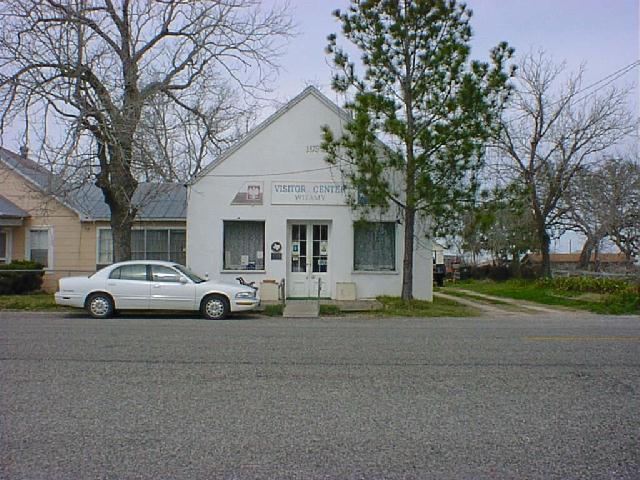
| 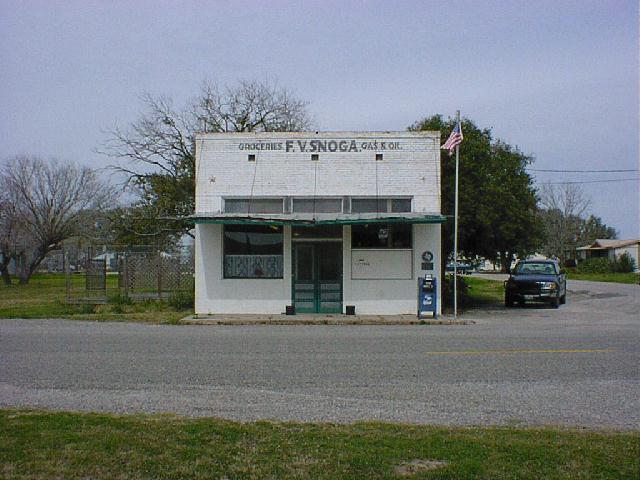
| 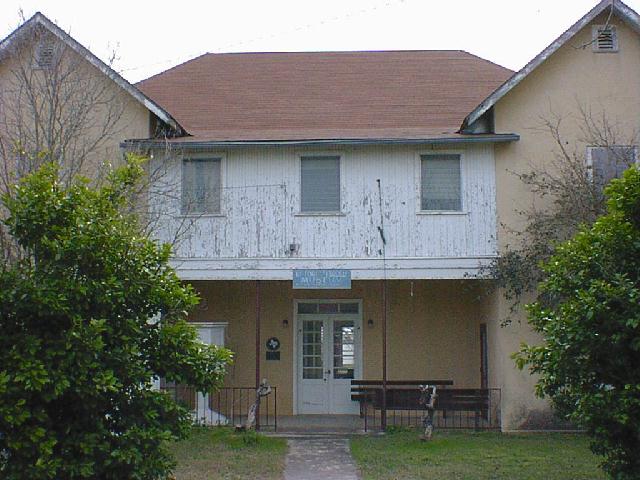
|
| Visitor's Center | Post Office and Grocery Store | St. Joseph's School and Museum |
|---|
*The visitor's center in Panna Maria is located just across the street from the Immaculate Conception Church. The center is filled with trinkets and historical photos for sale by volunteers and members of the Panna Maria Historical Society. The building, built in 1875 and formerly the Pilarczyk Store building, was donated in 1991 by the Dworaczyk family.
*Historic Snoga's Store, is located next to the visitor's center in the heart of Panna Maria. The store was originally a barn built by nineteenth century landowner John Twohig and is not only the post office but is also a center for social activities. If interested, the store can be rented through the Historical Society at the Visitor's center. It is a true landmark to American Polonia and is a compliment to the serene visage of this beautiful small town.
*St. Joseph's School at Panna Maria, dedicated in 1868, is the oldest Polish school in America. This picture, taken in 1908, shows two Sisters of Charity of the Incarnate Word with their pupils. This order remained in charge of the school until the middle of this century. School was first taught in Panna Maria in 1866 by Father Felix Zwiardowski, who used an old barn as a temporary school for his 32 pupils. Today St. Joseph's is also the Panna Maria Museum. I must say that I was completely shocked when I arrived in the town to look around and was readily handed the key to the Museum to use at my convenience. Panna Maria is old world charm and old world beliefs intertwined to make the experience one well worth the long drive getting there.

*A statue of St. Anne was one of three that were officially installed on the left side of the altar in the Immaculate Conception Church. The statue was a gift from Archbishop Alfons Nossol of the Opole, Poland, diocese.
*The Panna Maria Cemetery, located west of the town, is easily accessible from the center of town. The location marks the second burial site for it's occupants. The original stood where the Church stands now and had to be relocated so that construction could occur. The cemetery is a historical trek through thousands of immigrant lives. Headstones reflect those that originally established the colony.
Scheduled Events:
Currently the Panna Maria Historical Society Members are scheduling a class reunion for any students that are still living and attended the St. Joseph's School. The reunion is set for some time in the early part of the summer of 2002. Anyone having information about former students is encouraged to contact the Society at the Visitor's Center.
FUTURE PROSPECTS:
excerpts from Loretta Niestroy and the Panna Maria Newsletter
John Volz of Volz and Associates in Austin, TX and Mary Frederickson of Arts Care, Inc. in Canyon, TX came to Panna Maria to do an assessment of the St. Joseph's School and Museum. Currently the Museum of Panna Maria is located in the old School building just beside the Immaculate Conception Church. The estimated cost to remodel the Museum was set at $400,000.00. The Panna Maria Historical Society is trying to raise the money through various organizations and hoping to have the much needed renovations completed by the 2004 sesquicentennial celebration.
Panna Maria Convent Bed & Breakfast
Historic village B&B recommended for it's simplistic charm
The perfect place for a retreat with masses is the Panna Maria Bed & Breakfast. There is just something about waking up to the sounds of the Texas country side and the enchanting hum of church bells. The B&B is located centrally and provides a warm country atmosphere for it's visitors. San Antonio and surrounding historical communities are a short drive away. Reservations can be made by phone at (830)780-2650.
A Warm Fuzzy Welcoming
Last semester in History 1301, Professor Field discussed a small Texas town he had been to and truly enjoyed. My interest was piqued when he mentioned the beautifully remodeled church in the town's center and I knew that I had to get down there some time, although I had no clue when that would actually be. This semester with my choice of web enhanced History, provided the perfect opportunity for the exploration of this small hidden Texas treasure. In February I drove down to Panna Maria with my daughter and had the most wonderful visit with the townspeople. We knew we had arrived in Panna Maria when we crossed the San Antonio River and stopped to read the historical marker. The bridge and it's surrounding areas were gorgeous. Birds were chirping sweetly masked only by the rolling sounds of the river gently bouncing over rocks lining its bed and sides. We got back into the car and continued on. The first, and in my opinion most eye catching thing, we encountered was the Immaculate Conception Church. The church stands huge and towering over everything around it, but also lends a welcoming type of feel to the are. After carefully reading all the donation bricks in its sidewalk and visiting the monuments of Fr. Moczygemba's burial site and the tree where the first mass was given on Christmas Eve, we entered the church. The church was beautiful. The main center altar was so intricately done it was breathtaking. There were two other altars, one on the right and one on the left with Madonnas placed in them and abundant panes of stained glass showering multicolored rainbows over all that stood before them in awe. Our next stop was the Visitor's Center. The building was obviously very old and after the experience in the church I couldn't wait to get inside. Inside there were all kinds of trinkets and memorabilia for sale to benefit the preservation of Panna Maria. The Historical Society operates the Visitor's Center and one of my interviews actually occurred by accident during that visit. It was such and informative and pleasant experience that I came away with so much more than just information. I was provided the key to the Museum and my daughter and I strolled through it leisurely snapping pictures and enjoying the mock classroom they have set up inside. In all I have to say that the whole experience has been one that I won't soon forget and that I have come away with a newly discovered interest in the Historical aspect of towns in Texas. Professor Hines, you had the right idea and this assignment has motivated me to explore and learn on my own, for that, I truly thank you.
Annotated Bibliography:
Interview Sources:
Interview with Kim Jarzombek: This interview was interesting to say the least. Kim's family originally came to this country from Poland and helped establish Panna Maria as a colony. Her grandmother's stories relayed through her were an invaluable insight into the life and hardships of the early settlers.
Interview with Loretta Niestroy: The interview with Loretta kind of caught me off guard. I went to Panna Maria just to look around but was pleasantly surprised when Loretta began giving me information pertinent to the project. She used to be the President of the Historical Society and is still a volunteer in the Visitor's Center. She has a wealth of knowledge about the town and it's history.
Paper Sources:
Historical Society, Panna Maria, "Panna Maria Newsletter": Panna Maria, Texas, December 2001.
Comments:
This
source was helpful in providing most of the background for the townspeople and
their continued interactions with one another. It documented current
events and visits by significant politicians. It also explained the need
for volunteers and money for the restoration projects in the town.
Baker, Lindsey T. The First Polish Americans: Silesian Settlements in Texas. Texas A&M University Press, 1979.
Comments:
This book gave a first hand account from immigrants that originally made the trek to Texas from Poland. There were many stories of the hardships and tragedies the settlers faced.
Dworaczyk, Edward J. The Millennium History of Panna Maria. Dallas Morning News, Sept. 30, 1988.
Comments:
Edward Dworaczyk's family are the one's that donated the Panna Maria Visitor's Center. His family has been influential in keeping the town's historical benefits alive for generations.
Historical Society Members.Czestochowa Millennium Historical Society Book. Liberty Print, 2000
Comments:
This book was compiled by the Czestochowa Society Members and provided to me by Kim Jarzombek and her family. The source was of great use in explaining the early Polish settlers thoughts and feelings. There was a wealth of information regarding lineage and Polish heritage.
Kerr, Rita. The Ghost of Panna Maria. Eakin Press, 1990.
Comments:
This book recounts the daily life of Anna Maria in the earliest Polish settlement of Panna Maria.
Online References:
Return to Small Town Research Projects Index